
Home |
About Us |
How to Participate |
Biodiversity Modules |
Projects |
Maps |
News |
Resources

Home |
About Us |
How to Participate |
Biodiversity Modules |
Projects |
Maps |
News |
Resources
|
Definition of "Deciduous/Conifer forest" - General Code 800: Areas containing greater than 50% of trees, composed of both deciduous and conifer trees, as the primary vegetation. Note: Urban areas with a lot of large trees are not forests; use the developed code. |
Forest: Deciduous/Conifer forest (872)
 | Descriptive Habitat Code: Deciduous/conifer forest (8) intermediate in age (7), with a closed canopy (2). |
 American Black bear Ursus americanus Code: URAM Photo: Natures Pics | Distribution and
Habitat: It is found in mountainous, forested, and wetland habitats Diet: Interesting fact: |
 Coyote Canis latrans Code: CALAT Photo: RA |
Distribution and Habitat: It is found in mountainous areas, grasslands, deciduous and mixed coniferous forests and even urban areas. Diet: Interesting fact: |
 Ensatina Ensatina eschsholtzi Code:ENES Photo: WDFW |
Distribution and Habitat: It is found under bark, logs and rocks in coniferous and deciduous forests; both in open and wooded settings. Diet: Interesting fact: |
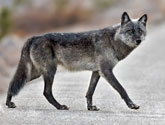 Gray Wolf Canis lupus Code: CALU Photo: Natures Pics |
Distribution and Habitat: Gray wolves are one of the most wide ranging land animals. They occupy a wide variety of habitats, from arctic tundra to forest, prairie, and arid landscapes. Diet: Interesting
fact: |
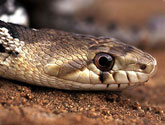 Gopher snake Pitouphis melanoleucas catenifer Code: PIME Photo: Chris Brown |
Distribution and Habitat: It is found in mountainous and rocky areas up to an altitude of at least 8000 feet. Diet: Interesting
fact: |
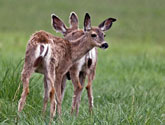 Mule Deer Odocoileus hemionus Code: ODHE Photo: Natures Pics |
Distribution and Habitat: Mule Deer are found throughout Washington, including the islands, in hardwood and coniferous forests, dense shrubs or other young successional stages with small trees or shrubs. Diet:
Interesting fact:
|
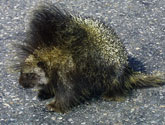 Porcupine Erethizon dorsatum Code: ERDO Photo: Natures Pics |
Distribution and Habitat: Porcupines live in forests throughout most of the western United States and parts of the Northeast. They are also found throughout forests in Canada. Diet: Interesting
fact: |
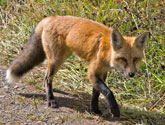 Red Fox Vulpes vulpes Code: VUVU Photo: Natures Pics |
Distribution and Habitat: In Washington, the Red Fox is indigenous in forests of the central and east Cascades and has been introduced in other parts of the state. Diet: Interesting
fact: |
 Steller's jay Cyanocitta stellari Code: CYST Photo: RA |
Distribution and Habitat: It is found throughout conifer forests and developed areas with large trees. Diet: Interesting fact: |
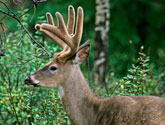 White-tailed Deer Odocoileus virginianus Code: ODVI Photo: Natures Pics |
Distribution and Habitat: White-tailed deer are found in North America from southern Canada through Central America. Deer prefer open woodland, but are often found on the fringes of urban areas and in farming country. Diet:
Interesting fact:
White-tails, particularly the young, are preyed upon by bobcats, mountain lions, coyotes, and wolves. |
Home |
About Us |
How to Participate |
Biodiversity Modules |
Projects |
Maps |
News |
Resources